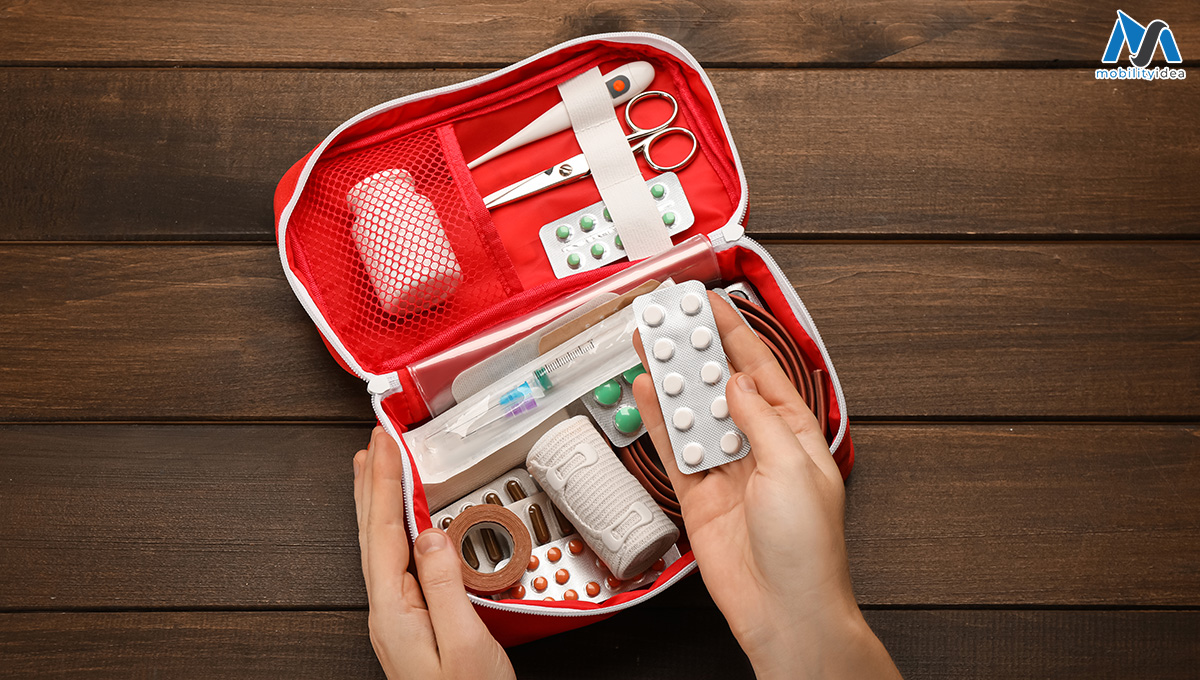Top-Rated Travel First Aid Kit for Every Travel Emergency
Whether you are touring across mountains, boarding a long-haul flight or heading out on a weekend road trip, a well-stocked travel first aid kit is your smartest trip companion. It’s not just about dealing with extremities it’s about staying comfortable, set and stress-free wherever your trip takes you. From minor scrapes to muscle soreness or unanticipated temperature shifts, the right medical rudiments can save the day. With ultramodern trip bringing changeable conditions, having a courteously packed travel medicine kit has become essential. In this blog, we'll cover what to include, how to use it and why this simple pack could be the most important thing in your bag.
Why a Travel First Aid Kit Is a Travel Essential
A trip first aid kit is more than just tapes and antiseptic it’s peace of mind in your pack. Emergencies don’t stay for pharmacies and when you are long hauls away from home, time matters. Having a portable kit acclimatized to your requirements means you are always set, no matter the position. From treating minor becks or cuts to managing stir sickness or unforeseen muscle aches, a compact yet comprehensive kit ensures you are noway caught off guard. Plus, it saves you the hassle of locating medication in strange places, especially when language or product differences come into play.
Must-Have First Aid Items in Your Travel Kit
A well-rounded kit should include the most common first aid particulars that cover a range of minor health enterprises. Whether you are a solo rubberneck or a parent on a family trip, these basics will come in handy:
- Bandages and Wraps: For cuts, scrapes or common support, a variety of tapes and wraps are pivotal. Include adhesive strips, gauze pads and elastic wraps for sprains.
- Antiseptic Wipes and Ointment: Clean wounds effectively and help infection with antiseptic results. Wipes take up less space and are easier to use on the go.
- Pain Relievers and Allergy capsules: Keep a small store of ibuprofen or acetaminophen for headaches, cramps or complications. Allergy pills are also useful for unanticipated responses.
- Thermometer and Tweezers: A digital thermometer helps cover complications, while tweezers are great for removing slivers or nonentity stingers.
- Personalised Hand Sanitizer: Staying clean while traveling is essential. A individualized hand sanitizer bottle ensures hygiene while adding a particular touch to your kit.
Quick Relief rudiments for Common Travel Discomforts
Travel frequently comes with physical discomforts. Be it sore muscles from hiking or injuries due to temperature fluctuations, your kit should handle it all:
- Instant Cold Pack: An cold pack provides quick relief from inflammation, sprains or nonentity mouthfuls. It activates incontinently and requires no refrigeration.
- Best Muscle Pain Relief Cream: A trip-sized muscle pain relief cream helps soothe aches and stiffness from long flights, hikes or emphatic trip conditioning.
- Hand Sanitizer Wipes: When cleaner and water are not available, sanitizer wipes are a great volition. They’re accessible, gentle on skin and space-saving.
- Motion Sickness Tablets: However, include many anti-nausea tablets, if you’re prone to nausea on the move. They’ll keep you steady whether you are on land, ocean or air.
- Emergency Connections Card: Always include a card with medical connections and allergies. In emergencies, this small detail can be a lifesaver.
Travel Emergency Kit vs. Regular First Aid Kit
Here’s a quick table pressing the crucial differences between a trip emergency tackle and a standard household first aid tackle:
|
Feature
|
Travel Emergency Kit
|
Standard First Aid Kit
|
|
Size & Portability
|
Compact, lightweight, space-saving
|
Bulky and designed for home use
|
|
Contents
|
Travel-specific items (cold packs, meds)
|
General wound care and home-use items
|
|
Durability
|
Designed for outdoor and rugged use
|
Basic containers, not built for mobility
|
|
Usage Scenarios
|
Outdoor, flight, hiking, travel settings
|
Home accidents, minor household injuries
|
|
Customization
|
Easily customizable for traveler needs
|
Less tailored; usually generic supplies
|
Travel-Specific Additions You Shouldn’t Skip
When traveling with medical requirements or on longer journeys, it's important to go beyond the basics and suppose about specialty particulars:
- Insulin Cooler Travel Case: For trippers with diabetes, an Travel Case ensures medication stays at the right temperature without counting on refrigeration.
- Instant Cold Compress: Unlike ice packs, an instant cold wave compress workshop with a quick squeeze, offering immediate relief for bruises or heat-related discomfort.
- Scissors and Small Flashlight: Small scissors can cut bandages or apparel in an emergency, while a mini flashlight is perfect for low-light situations.
- Nasal Decongestants or Saline Spray: Trip frequently affects sinus health due to altitude changes. Having a quick nasal result can ease discomfort.
- Extra tradition Meds: Always carry 1- 2 days of backup medication in case of detainments or loss. Store them in labeled mini holders.
How to Pack and Organize Your Travel Medicine Kit
Organizing your trip medicine kit is just as important as what goes outside. A cluttered or inadequately packed tackle can decelerate you down during extremities.
- Use Clear Zip Pouches: classify particulars by type, crack care, pain relief, sanitation in labeled zip-cinch pouches for easy access.
- Check Expiry Dates: Review specifics and creams regularly to ensure they're within date. Replace expired particulars before each trip.
- Opt for Travel Sizes: Only pack small, trip-friendly performances to save space and stay within airline liquid restrictions.
- Pack in an Accessible Spot: Keep the tackle in a side fund of your pack or carry-on so it's easy to snare when demanded.
- Keep It streamlined: After every trip, restock what you’ve used. This ensures your tackle is always ready for the coming adventure.
Be Travel-Ready. Pack Your Kit!
Being set is one of the smartest effects you can do while traveling and nothing says “set” better than a precisely curated travel first aid kit. It’s your go-to result for unanticipated scrapes, aches or health interruptions on the road. From tapes and wraps to an Insulin Cooler Travel Case, the right inventories help you enjoy the trip with peace of mind. By blending common-sense quilting with essential first aid particulars, you will never feel fit, whether you are on a weekend flight or exploring a new continent. So pack smart, trip safe and stay confident wherever your passport takes you.
FAQs
- What should a travel first aid kit include?
It should include basic medical supplies like bandages, pain relievers, wipes and cold packs. Add personal medications and travel-specific items like sanitizer and motion sickness tablets.
- Can I carry a travel first aid kit on a flight?
Yes, you can carry it in your cabin bag. Just make sure all liquids and gels follow TSA/airport security size regulations.
- Is a travel medicine kit different from a regular one?
Yes, it’s compact, lightweight and tailored for travel needs. It includes portable, quick-use items like instant cold packs and wipes.
- Do I need a first aid kit for short trips?
Absolutely! Even for short trips, minor injuries or illnesses can occur. A small kit ensures you're prepared without taking up much space.


